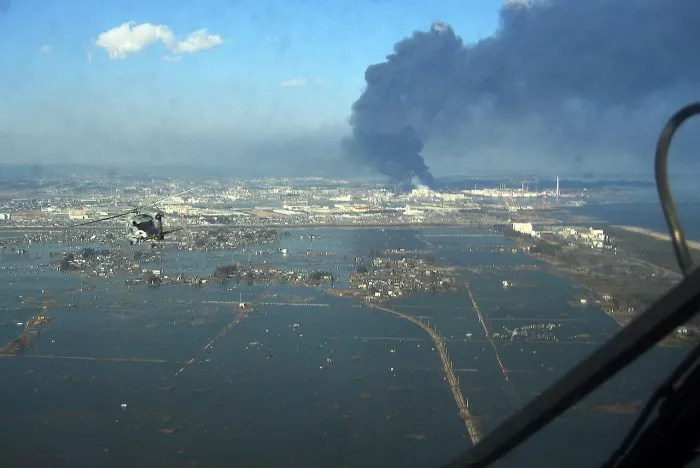Two minutes after the world's largest tectonic plate shook off the coast of Japan, the country's Meteorological Agency issued a final warning to about 50 million residents. A magnitude 8.1 earthquake produced a tsunami and hit the shore. However, it was not until a few hours after the arrival of the waves that experts measured the real scale of the East Japan earthquake on March 11, 2011. In the end, it reached a magnitude of 9 - releasing more than 22 times the energy predicted by experts and killing at least 18000 people, some of which have never been warned. Now, scientists have found a way to obtain more accurate scale estimates faster by using computer algorithms to identify the wake of gravity waves emitted at the speed of light from faults**

"This is a new way to [identify] large magnitude earthquakes," said Richard Allen, a seismologist at the University of California, Berkeley, who was not involved in the study. "If we implement this algorithm, we will have greater confidence that this is a real big earthquake, and we can send out alarms in a larger area faster."
Scientists usually detect earthquakes by monitoring ground vibrations, or seismic waves, using equipment called seismometers. The number of advance warnings they can provide depends on the distance between the earthquake and the seismograph and the speed of the seismic wave, which is less than 6 kilometers per second. Networks in Japan, Mexico and California provide seconds or even minutes of early warning, and this method is effective for relatively small earthquakes. But beyond magnitude 7, seismic waves will saturate the seismograph. Allen said this makes the most destructive earthquakes, such as the East Japan earthquake, the most difficult to identify.
Recently, researchers involved in the search for gravity waves realized that these gravity signals propagating at the speed of light may also be used to monitor earthquakes. "The idea is that as long as the mass moves anywhere, the gravitational field will change, and... Everything will feel it. Surprisingly, the signal will even appear in the seismograph," said Bernard whiting, a physicist at the gravitational wave observatory of the University of Florida, a laser interferometer
In 2016, whiting and his colleagues reported that ordinary seismometers could detect these gravity signals. The earthquake caused great changes in quality; These changes produce gravity effect, which deforms the existing gravity field and the ground under the seismograph. By measuring the difference between the two, scientists think they can create a new earthquake early warning system. The gravity signal appears on the seismograph before the arrival of the first seismic wave. It is traditionally ignored in a part of the seismogram. By combining the signals of dozens of seismometers, scientists can determine patterns to explain the size and location of large events, whiting said.
Now, Andrea Licciardi, a postdoctoral fellow at Blue Coast University, and his colleagues have established a machine learning algorithm to do this pattern recognition. They trained the model on hundreds of thousands of simulated earthquakes and then tested the model on real data sets in the northeast. The model accurately predicted the magnitude of an earthquake in about 50 seconds, faster than other state-of-the-art early warning systems, researchers reported in the journal Nature on Thursday.
"It's not just the seed of an idea -- they've proved it can be done. What we're showing is a proof of principle. What they're showing is a proof of implementation," whiting said
The gravity signal is too weak to detect earthquakes less than magnitude 8.3 with current technology, and the system is unlikely to provide additional advance warning in seismic areas already covered by seismometers. But it can provide more reliable estimates of the size of large earthquakes, which is crucial, especially for predicting tsunamis, which often take an additional 10 or 15 minutes to arrive, Allen said. With this technology, Japanese seismologists can accurately determine the magnitude of earthquakes in the northeast and issue appropriate alarms "within one or two minutes after the earthquake begins," said Jean Paul ampuero, a seismologist at Blue Coast University and co-author of the paper. "In 2011, it will take a few hours. It will be very good."
But the technology has not been put into use. It has not yet processed data in real time. The model will be deployed in Japan - but only for earthquakes in specific fault areas that may produce "major earthquakes". Licciardi said the algorithm needs to be trained separately for use in different regions, and researchers are currently training seismic networks in Peru and Chile. Nevertheless, "we have a first generation algorithm... It's a huge step forward," Allen said. "Now let's find out if it really works."